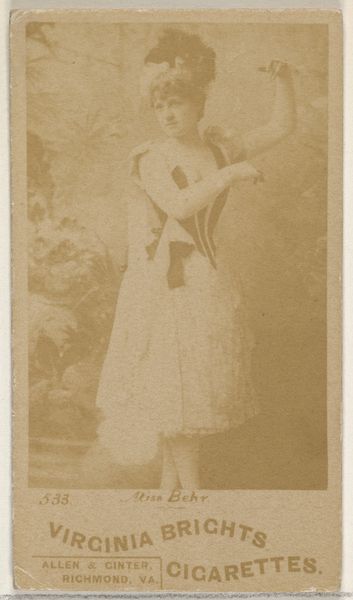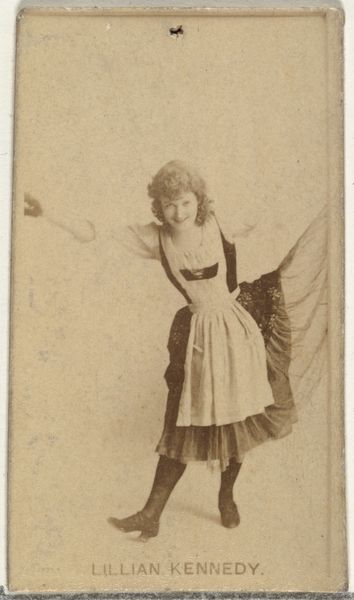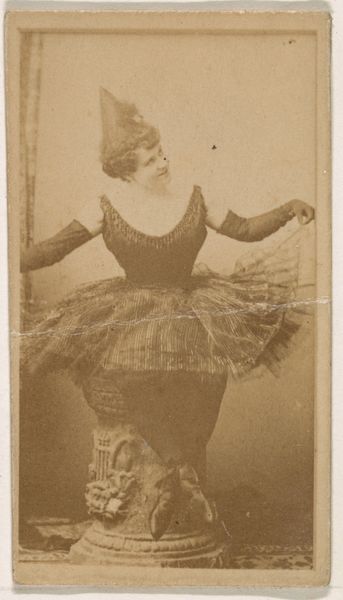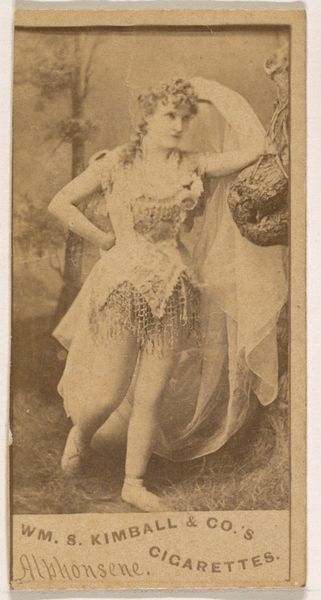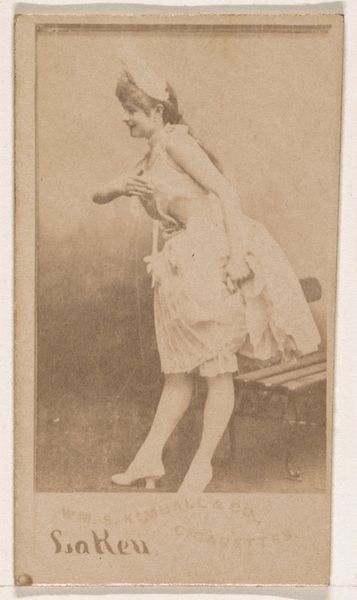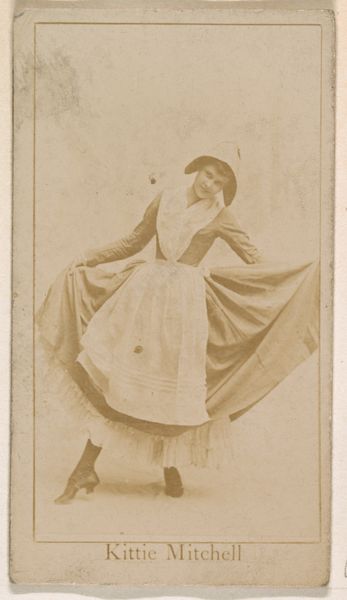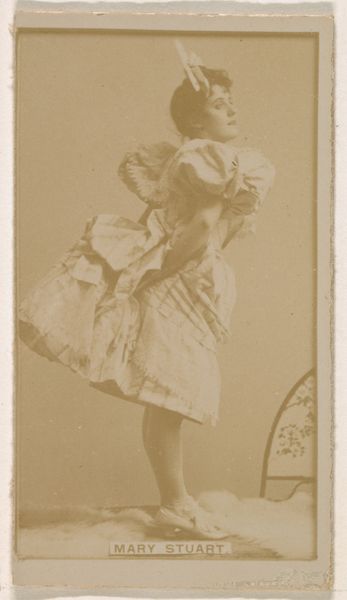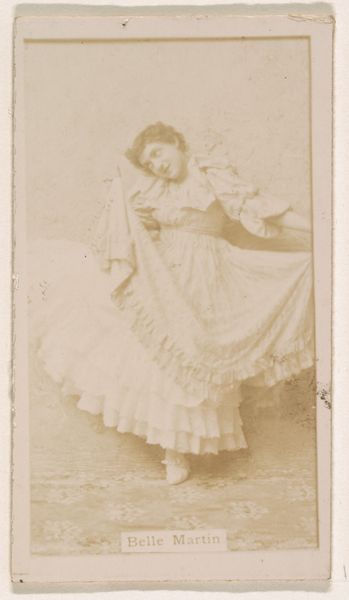
Litta, from the Actresses series (N245) issued by Kinney Brothers to promote Sweet Caporal Cigarettes 1890
0:00
0:00
drawing, print, photography
#
portrait
#
drawing
# print
#
photography
Dimensions: Sheet: 2 1/2 × 1 7/16 in. (6.4 × 3.7 cm)
Copyright: Public Domain
Editor: This is "Litta," a photographic print from 1890, part of the "Actresses" series by Kinney Brothers, created to promote Sweet Caporal Cigarettes. I’m immediately struck by the theatricality of it all. What historical context should we consider when viewing it? Curator: Well, let's unpack that theatricality. These actresses' cards weren't just innocent portraits. They played a crucial role in the burgeoning consumer culture and the changing roles of women. The mass production of images like this meant that idealized images of women were becoming widely accessible. This image suggests what exactly? Editor: Perhaps it alludes to how actresses, as public figures, embodied ideals of beauty and aspiration. Their images became intertwined with products like cigarettes, associating consumption with glamour and sophistication. Is that reading too far into it? Curator: Not at all. These cards democratized a certain kind of celebrity worship, and helped shape societal values around gender, performance, and public image. How were women being publicly perceived and commodified through products like Sweet Caporal Cigarettes? Also, consider how class plays into this, bearing in mind the accessibility of this imagery for varied audiences, who are then presented with this spectacle? Editor: So it's about more than just entertainment; it reflects how industries shaped and profited from societal perceptions of women at the time. Were there other products besides cigarettes that often used imagery of women during the period? Curator: Absolutely, this type of imagery was ubiquitous with soap products, food items and even sewing machines! Considering the distribution of these images – often collected, traded, and displayed – we can glean that there was active construction of femininity in that time. Editor: That’s fascinating, I’d never thought about the circulation of these images that way. This has reshaped my appreciation for the image from solely something pleasing to look at, to considering societal issues behind it. Curator: And that’s precisely the power of historical analysis: connecting aesthetics to the broader socio-political currents of the time.
Comments
No comments
Be the first to comment and join the conversation on the ultimate creative platform.


